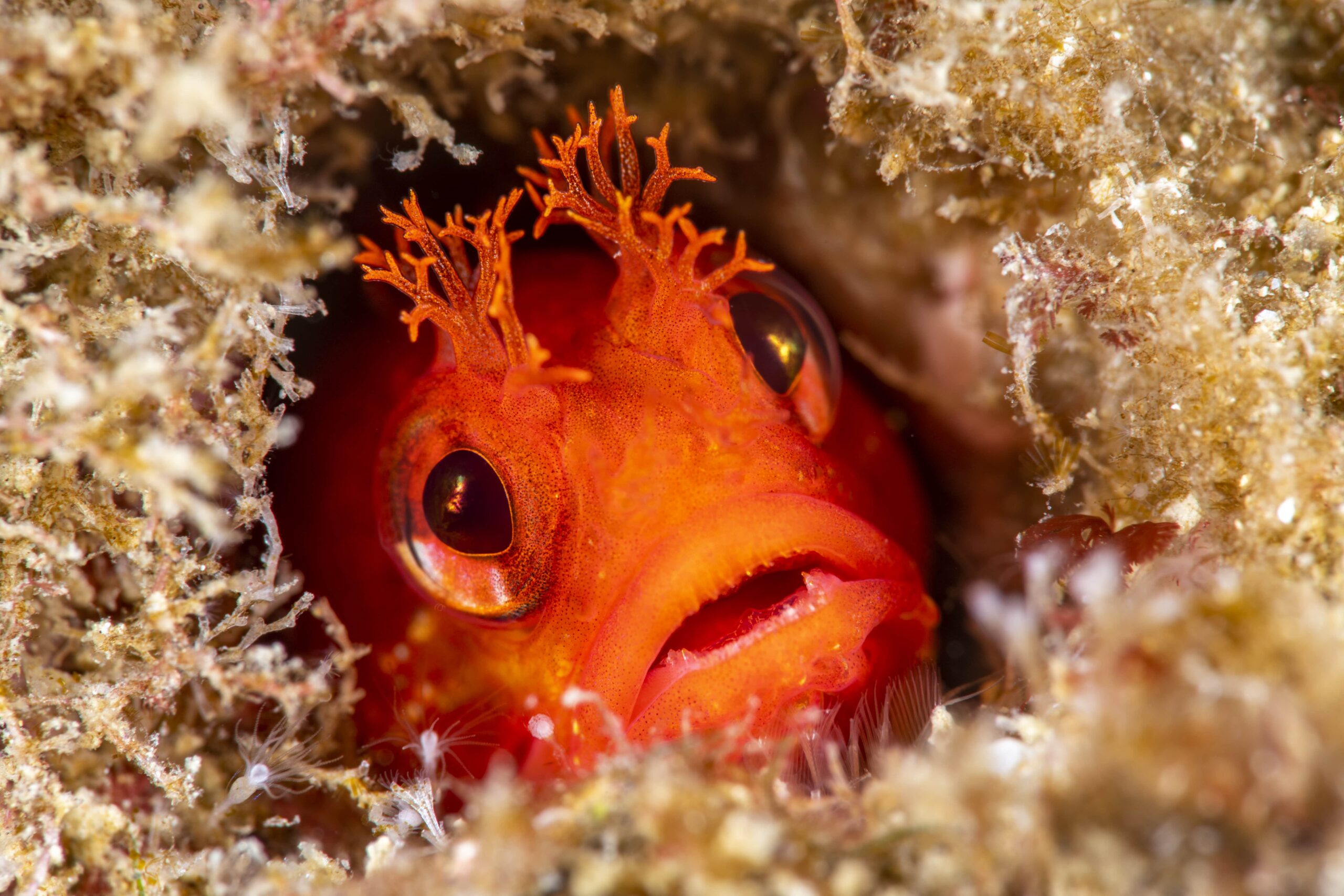
Bicolor Blenny Care Guide
Glossary:
- Care Guide & Requirements
- Reef Safe
- Prices
- Food & Diet
- Facts
- FAQs
- Tank Mates & Environment
Bicolor Blennies, or Ecsenius bicolor, are colorful fish that can be a great addition to your saltwater aquarium. Specifically, the Bicolor Blenny features a brown color on its front side, with a yellow-orange color toward the middle and tail end. They’re relatively easy to care for and can even help clean your tank by consuming algae that build up over time.
Is the Bicolor Blenny reef safe?
Bicolor Blennies are typically reef safe, but they may become a problem in reef tanks without the proper care. They’re herbivores that feed on algae and will ignore coral in most cases. However, crowding and underfeeding could make the Bicolor Blenny less coral-friendly.
Bicolor Blennies may start nipping at coral or other invertebrates, specifically large stony polyps (LSPs) and tridacnid clam mantles. They may also attack coral when foraging.
These risks make it important to look closely at your tank to determine whether your Bicolor Blenny is behaving peacefully among the coral.
Bicolor Blenny food and diet
Bicolor Blennies are herbivores that can feed on a lot of vegetation. Typically, the Bicolor Blenny feeds on algae in the tank, making it a great cleanup fish. You can use a pipe or rubber band to lower algae into the tank when feeding your Blennies, which will help you avoid disturbing them.
In addition to algae, you can feed your Bicolor Blenny herbivorous meals, algae-based dry foods, garlic, and even frozen Mysis shrimp.
What other fish are the best tank mates for the Bicolor Blenny?
Bicolor Blennies tend to be content and healthy fish with the right tank mates. While a single Bicolor Blenny is great to have, they don’t often like sharing the tank with others of their kind. The exception to this is if you have a male and female—otherwise, stick with one.
They also don’t like to compete with other fish of similar or smaller sizes, meaning they’ll go after Gobies, Dartfish, and other Blennies. You should also avoid keeping larger fish unless the Blenny has plenty of space to hide in caves and coral.
If you’re looking for the ideal tank mates for your Bicolor Blenny, you’re better off going with the following:
- Tangs
- Chromis
- Boxfish
- Pufferfish
- Damselfish
- Butterflyfish
Bicolor Blenny price
Bicolor Blennies are among the most affordable saltwater fish for an aquarium. You can find them on the market for around $20 to $40, though you may find some for around $50 to $70.
Bicolor Blenny facts
The following are some interesting facts about the Bicolor Blenny that you might not have known:
- Bicolor Blennies are also known as Two-Colored Blennies, Flame Tail Blennies, and Bicolored Blennies.
- They’re found in the Indo-Pacific region, where they tend to spend most of their time foraging around rocks and crevices.
- Their current conservation status is of “Least Concern,” which means their populations are likely stable and not facing extinction.
Bicolor Blenny FAQs
Do Bicolor Blennies jump?
Bicolor Blennies often jump from hole to hole within rocks in their surroundings. This means they may leap from the tank without the proper precautions.
Are Bicolor Blennies aggressive?
Generally, Bicolor Blennies are peaceful fish that won’t go after other fish or invertebrates. However, they have been known to get somewhat aggressive with certain fish, including Dartfish, Gobies, and other Blennies. They may also begin nipping at coral unless you feed them well and minimize stress in the tank.
Are Bicolor Blennies hardy?
While Bicolor Blennies are hardy, drip acclimation is still needed. You may need to use this method for around an hour if there’s enough of a difference between the tank and source water.
Where to buy Bicolor Blenny
Many stores make it easy to buy Bicolor Blennies online, including:
The Bicolor Blenny is a popular fish to have in a saltwater aquarium. With the right conditions and care, your Blenny is likely to improve the aesthetics of your tank while remaining easy to maintain.
